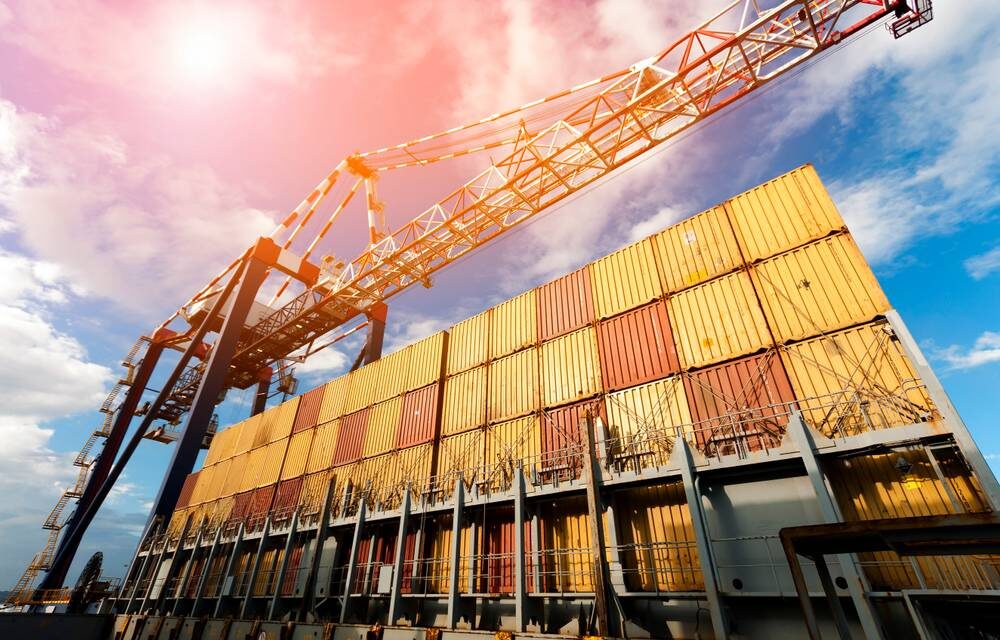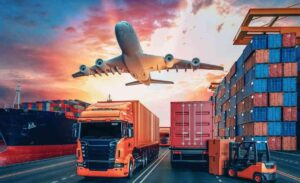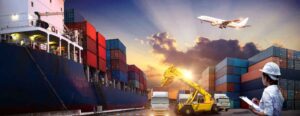For businesses venturing into the world of importing goods from China, navigating the complexities of freight forwarding can be daunting. A significant aspect of this process is understanding the various factors that influence freight forwarding costs. This comprehensive guide will equip you with the knowledge to optimize your logistics expenses and make informed decisions when shipping from China.
Understanding Freight Forwarding Costs

Freight forwarding costs encompass the fees associated with transporting your goods from a Chinese origin point to your designated destination. These fees typically cover a range of services, including:
- Inland transportation: Moving your cargo from the factory to the port of departure in China.
- Ocean freight: The cost of sea travel for your shipment, typically calculated per container (FCL) or per cubic meter (LCL).
- Air freight: The cost of air transportation, usually based on weight and dimensions.
- Customs clearance: Facilitating the smooth passage of your goods through customs at both origin and destination ports.
- Documentation: Preparing and processing necessary shipping documents, such as bills of lading and commercial invoices.
- Terminal handling charges: Fees associated with loading and unloading your cargo at ports and terminals.
- Insurance: Optional coverage to protect your cargo in case of damage or loss during transit.
Understanding this breakdown empowers you to better estimate total freight forwarding costs and identify areas for potential savings.
Factors Affecting Freight Forwarding Costs from China

Several factors influence the final cost of shipping your goods from China. Here’s a closer look at the key considerations:
- Mode of transportation:
- Ocean freight: The most cost-effective option for bulkier, non-perishable items, but with longer transit times.
- Air freight: Ideal for expedited deliveries of time-sensitive or high-value cargo, but significantly more expensive.
- Shipment size and weight: Larger and heavier shipments generally incur higher costs due to the space they occupy on a vessel or aircraft.
- Origin and destination ports: The distance between the origin and destination ports significantly impacts freight costs.
- Fuel prices: Fluctuations in fuel prices can directly affect transportation costs.
- Inland transportation costs: The distance between the factory and the port of departure in China can influence this cost component.
- Customs clearance complexity: The complexity of import regulations and the type of goods being shipped can affect customs clearance fees.
- Seasonality: Peak shipping seasons often see higher freight rates due to increased demand.
- Incoterms: These international commercial terms define responsibilities and costs associated with the shipment journey. Understanding incoterms is crucial for cost allocation between buyer and seller.
Different Modes of Transportation and Their Costs

The choice of transportation mode significantly impacts freight forwarding costs. Here’s a breakdown of the most common options:
- Ocean Freight (FCL – Full Container Load): This involves filling an entire container with your goods, offering cost-efficiency for large shipments. Costs typically range from $4,200 to $7,800 for a 40-foot container on the China-US route.
- Ocean Freight (LCL – Less Than Container Load): This option is suitable for smaller shipments that don’t fill a whole container. Costs are generally calculated per cubic meter, with rates varying between $1.1 and $2.1 per kilogram.
- Air Freight: This is the fastest mode of transportation but also the most expensive. Rates typically start at around $3 per kilogram for standard air freight, with express options costing even more.
Choosing the Right Mode: The optimal mode depends on your budget, shipment size, and delivery urgency. Consider a cost-benefit analysis to determine the best fit for your needs.
Optimizing Logistics Expenses Through Efficient Packaging
Strategic packaging can significantly reduce freight forwarding costs. Here’s how:
- Right-sizing your packaging: Utilize packaging materials that minimize wasted space while ensuring cargo protection.
- Palletization: Pallet-sized shipments are easier to handle and often qualify for discounted freight rates.
- Lightweight materials: Opt for lightweight yet sturdy packaging materials to minimize weight-based shipping costs.
Tips for Negotiating Freight Rates with Shipping Companies

Negotiating with shipping companies can lead to cost savings. Here are some negotiation tips:
- Get quotes from multiple freight forwarders: Compare rates and services to find the best deal.
- Highlight your business volume: Regular, high-volume shipments can leverage your business potential for better rates.
- Be flexible with delivery times: If time is not a critical factor, consider longer transit times for potentially lower rates.
- Negotiate additional services: Bundle services like customs clearance with your freight forwarding for potentially reduced costs.
Strategies for Minimizing Customs and Import Duties
Customs duties and import taxes can add a significant burden to your overall landed cost. Here are some strategies to minimize these charges:
- Accurate classification: Ensure your goods are correctly classified under the Harmonized System (HS) tariff code. Incorrect classification can lead to hefty penalties.
- Free Trade Agreements (FTAs): Take advantage of existing FTAs between your country and China. These agreements often provide reduced or eliminated duties on specific products.
- Valuation strategies: Understand customs valuation methods and ensure accurate declaration of your goods’ value to avoid overpaying duties.
- Work with a customs broker: A customs broker can navigate the complexities of customs clearance and advise on duty minimization strategies.
The Role of Technology in Optimizing Freight Forwarding Costs

Technology plays a crucial role in optimizing freight forwarding costs. Here’s how:
- Freight management software: These platforms streamline logistics management, providing real-time shipment tracking, cost comparisons, and automated documentation.
- Online marketplaces: Online freight marketplaces facilitate comparisons of quotes from multiple freight forwarders, enabling you to secure competitive rates.
- Blockchain technology: Blockchain offers enhanced transparency and security in the international shipping process, potentially reducing delays and associated costs.
By embracing these technological advancements, importers can gain greater control over their supply chains and optimize freight forwarding costs.
Choosing the Right Freight Forwarder to Save on Costs
Selecting the right freight forwarder is paramount in cost-effective shipping from China. Here are some key considerations:
- Experience: Choose a forwarder with proven experience in handling shipments similar to yours.
- Service offerings: Ensure the forwarder offers the services you require, including customs clearance, inland transportation, and cargo insurance.
- Reputation: Research the forwarder’s reputation for reliability, communication, and customer service.
- Competitive rates: Compare quotes from several forwarders to ensure you’re getting the best possible price.
- Technology adoption: Look for a forwarder that utilizes technology to improve transparency and streamline communication.
By carefully evaluating these factors, you can select a reliable freight forwarder who helps you optimize logistics expenses and navigate the complexities of shipping from China.
freight forwarding costs from China




